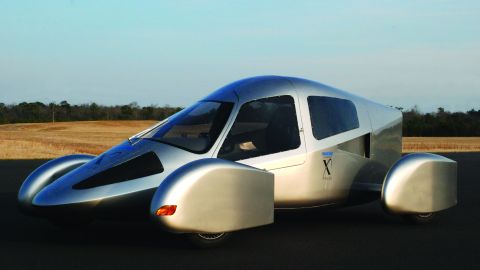Reinventing the Wheel: Upstart Automotive Innovation

What is the Big Idea?
The futuristic-looking Edison 2 is a vehicle built by a team of race car drivers, designers and engineers that boasts incredible fuel efficiency and featherweight dimensions. It was also the winner of the Progressive Automotive X Prize in 2010, a contest designed to push the boundaries of innovation and technology to solve some of today’s most challenging problems.
Google co-founder Larry Page, along with environmental experts and political thinkers, took part in creating the contest to encourage innovators to create fuel efficient, sexy and affordable vehicles that helps us stave off our addition to oil.
What is the Significance?
Innovations like Edison 2 point to key lessons that small businesses and new innovators can learn from and step up where big companies fall short. Big “dinosaur” companies can in turn learn to “dance to a new tune,” and be on the look out for disruptors on the horizon that are less adverse to risk and failure. This interplay is made possible through the democratization of innovation and increasing interconnectivity which makes innovation more accessible and global.
“This is good news because its democratization releases the untapped ingenuity of people everywhere, and that could help solve some of the world’s weightiest problems,” Vijay Vaitheeswaran explains in his new book Need, Speed, and Greed. “This will force the dinosaurs to dance in order to survive—and, just maybe, provide a renewed lease on life for the ones that come up with world-changing new ideas.”
Watch Vijay Vaitheeswaran talk about the new rules of innovation:
The Automotive X Prize was inspired in no small part by a chat between Page and fellow Silicon Valley innovator Vinod Khosla. They plotted what they hoped would be the “next great technological revolution: the convergence of software and smart electronics with the grease and grime of the oil and car industries,” Vaitheeswaran writes.
“This was an audacious goal, given that the entrenched incumbents of asset-heavy industries such as the car business tend to move slowly indeed,” said Vaitheeswaran. “Khosla was kicking around his plans for getting ‘chip guys’ together with ‘engine guys’ to develop the clean, software-rich car of the future. Such breakthroughs happen only when conventional wisdom is ignored and cross-fertilization encouraged.”
Page’s firm took hybrid vehicles like the Toyota Prius and turned them into plug-in vehicles, shaming established carmakers into investing in electric cars.
“Such pushes were necessary, as the dinosaurs initially refused to budge,” said Vaitheeswaran. “Khosla believes that clean cars, using advanced biofuels or other alternatives, will come about only through radical innovation of the sort that Big Oil and the Big Three automakers avoid.”
This post is part of the series Input/Output, sponsored by HP Input/Output.
Image courtesy of Edison 2.





